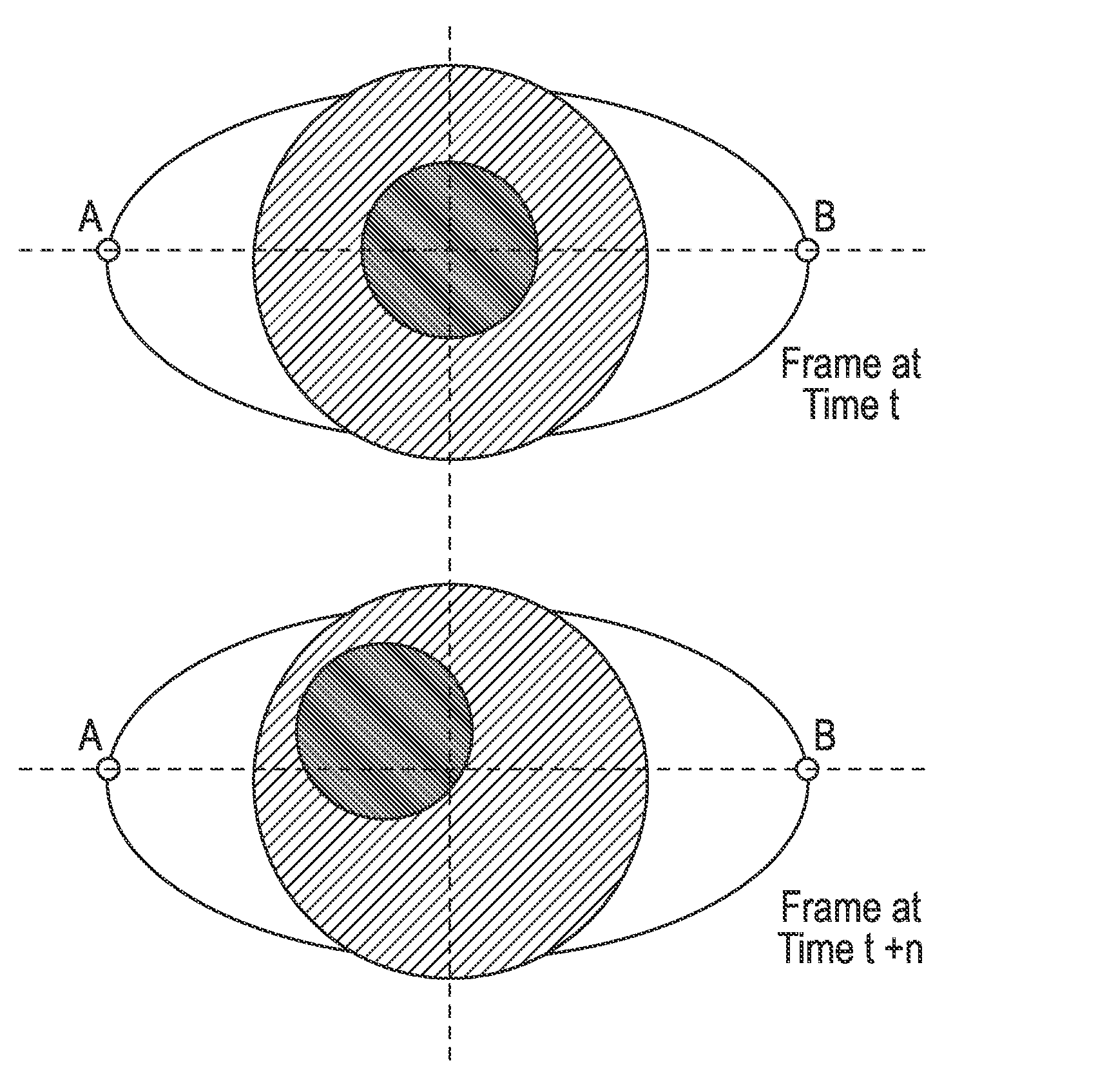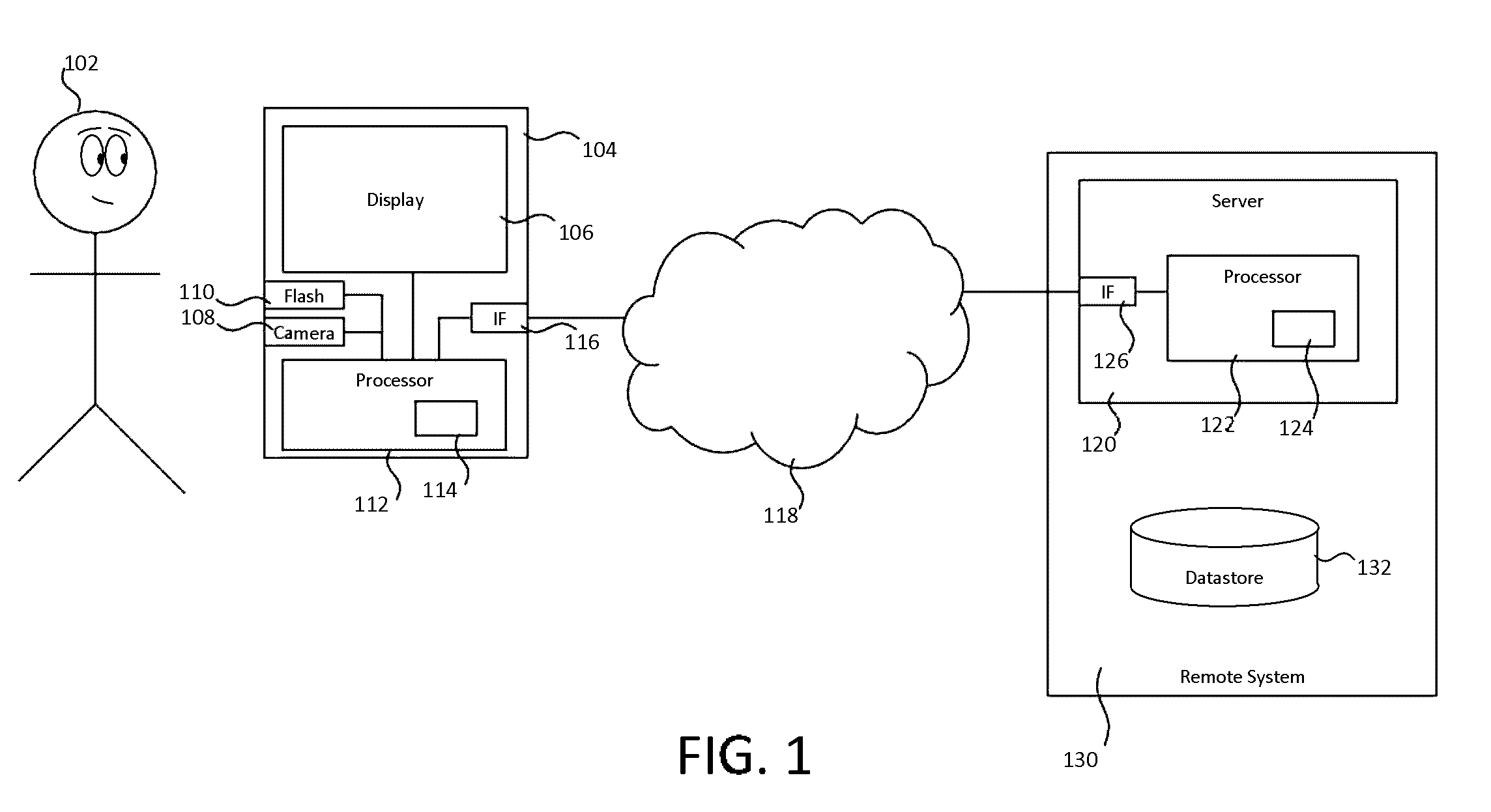Liveness detection
a technology of living entities and detection methods, applied in the field of living entities, can solve the problem that non-living entities have very difficult to replicate accurately reactions,
- Summary
- Abstract
- Description
- Claims
- Application Information
AI Technical Summary
Benefits of technology
Problems solved by technology
Method used
Image
Examples
first embodiment
[0099]FIG. 2A shows a liveness detection system 200a in the described technology. The liveness detection system 200a comprises the following functional modules: a liveness detection controller 218 connected to control the camera 108 and flash 110 (or alternatively the display 106); an image stabilizer 204 having an input connected to receive a video signal from the camera 204; a corner detector 202 having an input connected to receive the video signal and an output connected to the image stabilizer 204; an iris detector 205 having an input connected to receive a stabilized version of the image signal from the image stabilizer 204; a diameter estimator 206 having an input connected to an output of the iris detector 206 and an output; first second and third time differential modules 208a, 208b, 208c, each having a respective input connected to the output of the diameter estimation module 206; first, second and third accumulators 210a, 210b, 210c having respective inputs connected to t...
second embodiment
[0154]FIG. 6B shows a block diagram of a liveness detection system 200b in a The system 200b implements a technique for anti-spoofing based on tracking the iris movement by presenting elements at random positions of the screen.
[0155]In the second embodiment, in a liveness test performed according to Rn, the liveness detection controller controls the display 106 and the camera 108 of the user device. In the second embodiment, the liveness detection controller uses randomized data Rn generated by the randomized generator 219 to display randomized display elements at randomized locations on the display 106 in a liveness detection test. The randomized data Rn is in the form of one or more parameters that define the display locations, referred to as an eye tracking (“ET”) parameter set in the context of the second embodiment.
[0156]The corner detector 202, image stabilizer 204 and iris detector 205 are connected as in the first embodiment, and perform the same operations. The system 200b...
third embodiment
[0203]In the third embodiment, importantly, the randomness of the process is generated server-side.
[0204]After receiving the PD parameters from the pupil dilation server 120b (S1104a) and the ET parameters from the eye tracking server 120c (S1104b), the liveness server 120a transmits the PD and ET parameters to the user device 104.
[0205]At step S1107 user device 104 uses the PD and ET parameters to instigate the liveness detection processes of the first and second embodiments respectively by performing the randomized pulse test according to the PD parameters and the randomized display element test according to the ET parameters i.e. emitting light pulses at random interval(s) based on the PD set and displaying display element(s) at random locations selected on the user's curve Cv based on the ET parameter set. This may be triggered by the liveness server 120a requesting a liveness check from the user device 106, or the user device requesting a liveness detection check form the liven...
PUM
 Login to View More
Login to View More Abstract
Description
Claims
Application Information
 Login to View More
Login to View More - R&D
- Intellectual Property
- Life Sciences
- Materials
- Tech Scout
- Unparalleled Data Quality
- Higher Quality Content
- 60% Fewer Hallucinations
Browse by: Latest US Patents, China's latest patents, Technical Efficacy Thesaurus, Application Domain, Technology Topic, Popular Technical Reports.
© 2025 PatSnap. All rights reserved.Legal|Privacy policy|Modern Slavery Act Transparency Statement|Sitemap|About US| Contact US: help@patsnap.com



